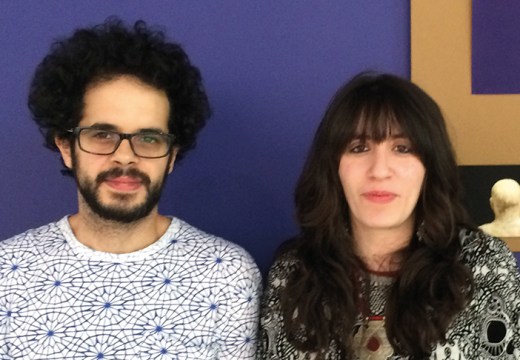Adam Pendleton creates bold, conceptual works that unravel ideas around social resistance, race, avant-garde art and underrepresented historical movements. Working in mediums that range from silkscreen painting and photographic collage to video, performance and publishing, Pendleton refers to his practice as ‘Black Dada’, a phrase originally coined by the poet Amiri Baraka. In 2008, he presented the Black Dada manifesto as part of his exhibition at the Indianapolis Museum of Contemporary Art and, in 2017, he published the ‘Black Dada Reader’, a compilation of historical essays and commissioned pieces by writers including Adrienne Edwards, Laura Hoptman and Susan Thompson. Pendleton’s work is currently on display at Pace Gallery in Geneva, until 5 October, and at Galeria Eva Presenhuber Zurich until 26 November.
Where is your studio?
Brooklyn, New York.
What do you like most about it?
The location. It’s walking distance from my home. I’ve been there for less than a year and previously my studios have always been 3o to 40 minutes away.
How do your surroundings inspire your work?
I think that the spaces you occupy influence the thoughts that you have, the fluidity and flexibility with which you approach your work. I’m very particular about my studio space: how it’s set up, what’s in it and how things are arranged and organised.

Installation view of ‘Adam Pendleton: In Abstraction’ at Pace Gallery, Geneva. Photo: Stefan Altenburger Photography Zürich; © Adam Pendleton
What makes a good assistant?
I look for intuition and dedication. I think so much of art, and the process of making it, is about what is unspoken. Some people pick things up really quickly and intuitively and others, for whatever reason, don’t. I think dedication leads to intuition – if you’re dedicated to the process, to art-making, it increases your chances that you’ll have a more intuitive relationship with your process.
Is there anything that frustrates you about your current studio practice?
I feel as though I can never find enough time to paint. There’s always something I have to do. But that’s also the most beautiful thing about time: it’s hurtling forward. One of the things I love about painting is getting lost in the relationship between time and space. That’s really a visual situation that I’m talking about: when things begin to occur in the visuality of the painting, that seem to transcend fixed ideas of time, or theories about the relationship to time and space.

Installation view of ‘Adam Pendleton: In Abstraction’ at Pace Gallery, Geneva. Photo: Stefan Altenburger Photography Zürich; © Adam Pendleton
Do you have a particular routine when you’re in the studio?
I like to go to the studio on the weekends when its quiet and there’s less going on. It’s almost a religious practice for me: to find that time on the weekend to go into the studio and find the work that I need to do, to get down to the making and [hope that] something occurs.
What’s the most well-thumbed book in your studio?
Right now, I’m really enjoying a book by Alexis Pauline Gumbs called Spill: Scenes of Black Feminist Fugitivity. I think she’s a great writer.
Do you listen to anything while you work?
Lately I’ve been listening to a song called Annie by the singer-songwriter Dijon, like the mustard. I don’t really like R&B, but this is sort of R&B meets folk meets indie rock. [Dijon] is one of those great, unexpected discoveries – he’s able to collapse all of these genres and modalities with what seems like not a lot of effort. All of his songs feel like a rehearsal, there’s a tentativeness to his performance.

Installation view of ‘Adam Pendleton: In Abstraction’ at Pace Gallery, Geneva. Photo: Stefan Altenburger Photography Zürich; © Adam Pendleton
What’s the strangest object in your studio?
The studio is quite minimalist. I’m always trying to limit extraneous objects. I guess the strangest thing is the chocolate bars in my desk drawers.
Who is the most interesting visitor you’ve ever had to your studio?
I would probably say my mom because she notices everything. Even though she’s not an artist herself or an art expert, she has a really good eye. It always fascinates me – I’m like, how is this possible, but it is possible!
‘Adam Pendleton: In Abstraction’ is at Pace Gallery, Geneva, until 5 October.
Unlimited access from just $16 every 3 months
Subscribe to get unlimited and exclusive access to the top art stories, interviews and exhibition reviews.














![Masterpiece [Re]discovery 2022. Photo: Ben Fisher Photography, courtesy of Masterpiece London](http://www.apollo-magazine.com/wp-content/uploads/2022/07/MPL2022_4263.jpg)
It’s time for the government of London to return to its rightful home